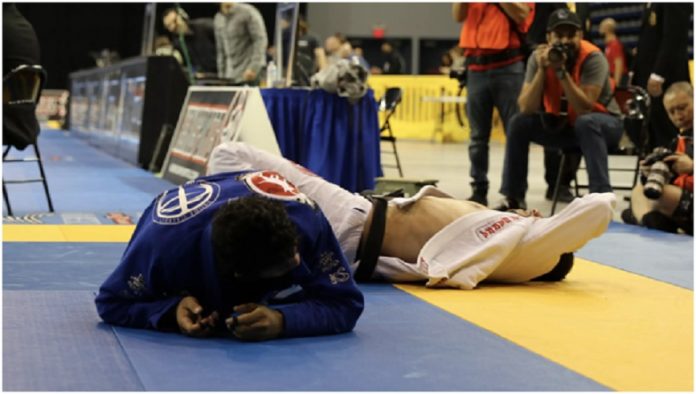
Tired? You should probably run more or do more Tabatas outside of training Jiu-Jitsu, right? Nope. What you should is understand that using the term “cardio” is the worst possible way of describing conditioning for BJJ. What you want as a grappler is the ability to be able to make it through a match while using multiple muscle groups with varying degrees of concentric, eccentric, and isometric movements. In other words, you want to figure out how to train endurance for BJJ, not cardio. It won’t matter whether you can run a marathon if you are not able to get through a round of grappling. So, let’s be specific and try to figure out what BJJ endurance is and how to train for it.
What exactly is endurance? For the purpose of Brazilian Jiu-Jitsu, we will describe it as the capacity of your muscles to withstand intermittent bouts of highly active and somewhat passive work for a set period of time. During that time, the muscles work in all their modalities (they contract, they relax and/or they hold in place). IN other words, BJJ endurance translates to muscular endurance, and that is a long way from what “cardio” stands for. Of course, energy systems are quite complex and we can never isolate them completely, but there are ways to figure out how to train for BJJ endurance in particular. The best way is to understand how grappling endurance works, and the best training methods for you.
What Affects Endurance In Jiu-Jitsu?
Before we get into how to train endurance for BJJ, let’s talk first about what determines endurance in the first place. There are plenty of factors, some individuals, and some common for all that affect BJJ endurance. In other words, you should look to choose a method that is specific or you and your goals, similar to putting together a Jiu-Jitsu game. In that sense, multiple factors influence your muscular endurance in Jiu-Jitsu.
First of all, there are individual factors. These are things like genetics and age that you can’t really influence, but you have to take into account. Genetics determine not just how muscular someone is, but what type of muscle fibers are predominant. All of it has a huge role to play when looking into BJJ endurance training. Age is pretty self-explanatory. Usually, endurance is at it’s highest between the age of 20-30. There’s also those that peak between 30 and 35, though. Accordingly, you should tailor your BJJ endurance training and goals (or rather said expectations) around your age and genetics, as you can’t really do anything to change this.
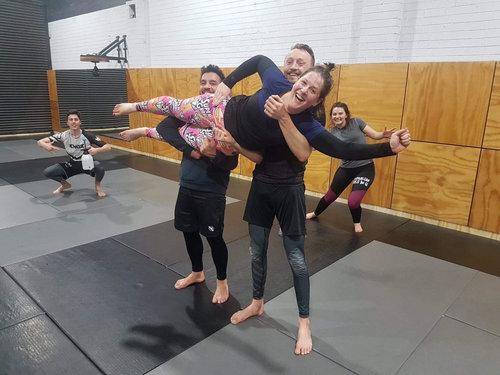
Building up BJJ Endurance
Speaking of building a BJ endurance routine, you should first start by an assessment. You’ll need to find out exactly where you are so that you can train the correct aspects of muscular endurance. As I said before, all energy systems have a role to play in figuring out how to train endurance for BJJ. If you have no idea where you’re at currently, just start your endurance training at the beginning. In terms of working specifically on BJJ endurance, you’ll need to go through several phases, to make sure you tick all the right boxes.
First, you start with an aerobic phase. It should last a couple of months, but not less than a month if you really want to see improvements. This is the time where you develop your aerobic base or the “cardio” part of the puzzle. In other words, you’re building up the capacity of the gas tank that will help fuel the duration and intensity your muscles are able to work with. Yeah, you can do running here, but I’d recommend long rolls (Metamoris-style rounds) or swimming as far better alternatives. The structure of your program should revolve around the individual factors we talked about earlier. That means it is going to be different for everyone.
The next phase is interval training when you start working a bit more specifically on the energy system most often utilized in BJJ – the anaerobic lactic system. This phase should also last for 2 months. Intervals mean you push your body and in particular your muscles to work hard for periods of time., Then, you recover while working less, but you never stop completely. In other words, you’re pushing your BJJ endurance in a way you would in a match.,The difference is, you’re usually doing it using fitness training methods, rather than rolling (although this is also a possibility). If you choose to develop this on the mats, consider specific tasks rounds, like looking to get as many armbars as possible in a round. Making rounds longer than those you’ll be competing in is always a good idea.
Finally, you get to the final 2-month phase – BJJ specific muscular endurance. This is the phase where you need to put kettlebells and medicine balls down and focus on rolling. You should already have a great aerobic base and a decent level of overall endurance so far. Now, it is time to tailor it to your needs and your BJJ game. Rolling volume should be the highest at this point. Rolls should involve a lot of game-specific rounds, different training partners, EBI overtime-style submission training, etc.
How To Train Endurance For BJJ
Finally, down to the nitty-gritty of BJJ endurance training. The approach is the same as in learning any Jiu-Jitsu technique. First, learn why endurance is important and why certain methods will allow you to develop it faster and better than others. Knowing that you can take a look at how, and try to figure out which methods/workouts best fit your needs.
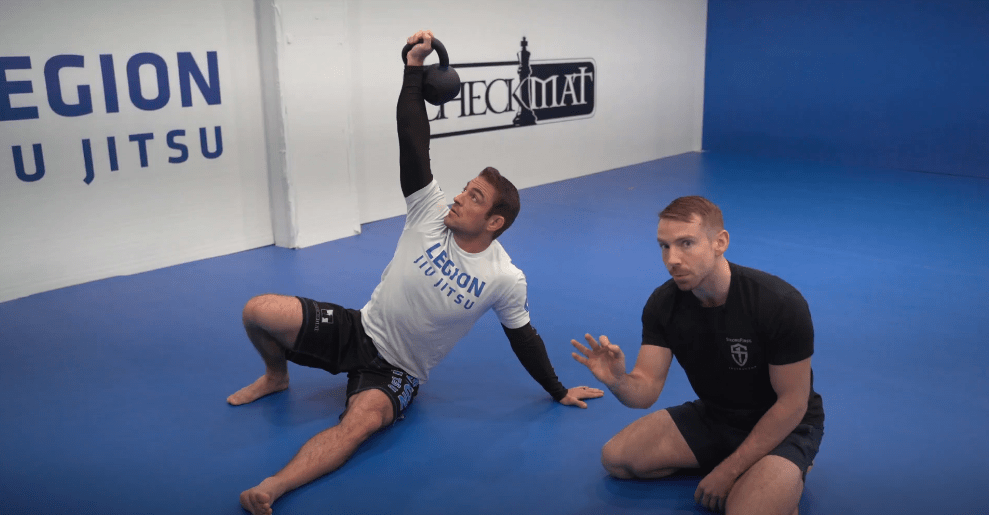
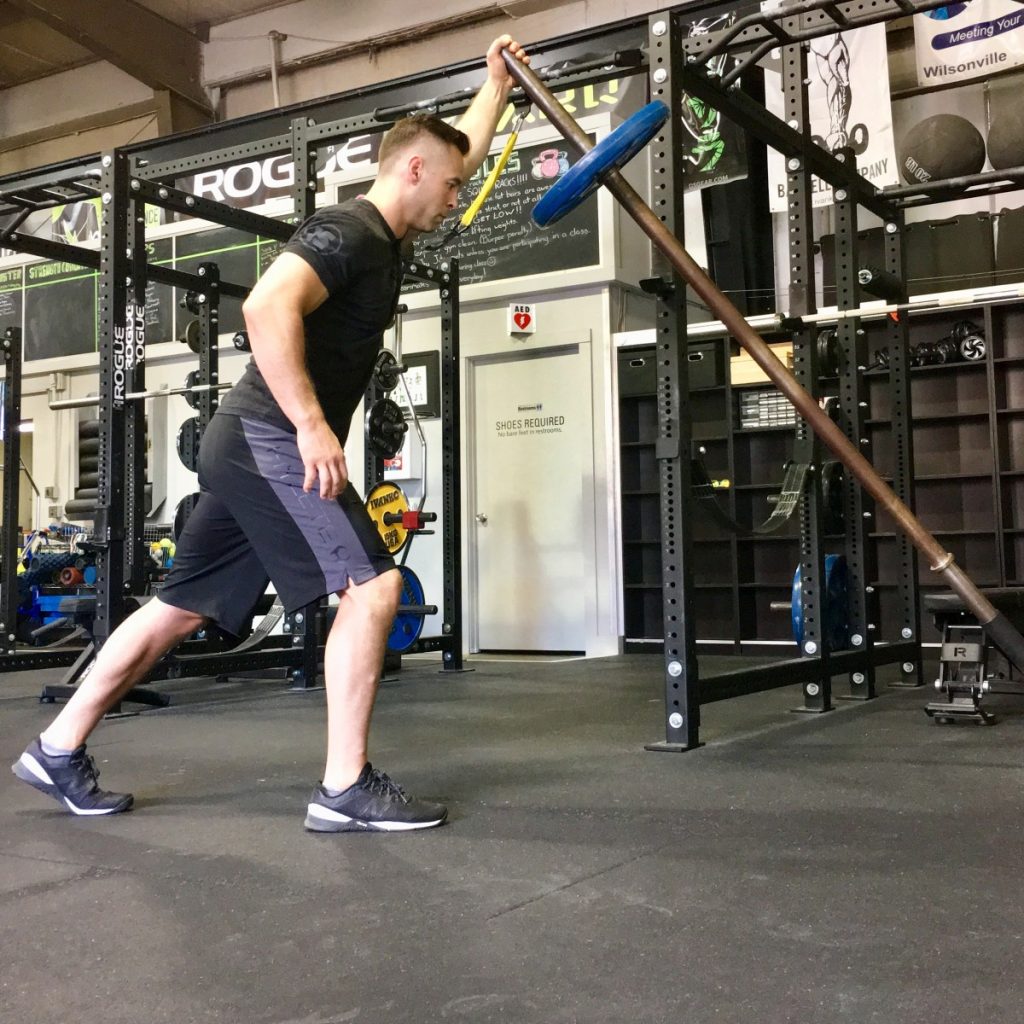
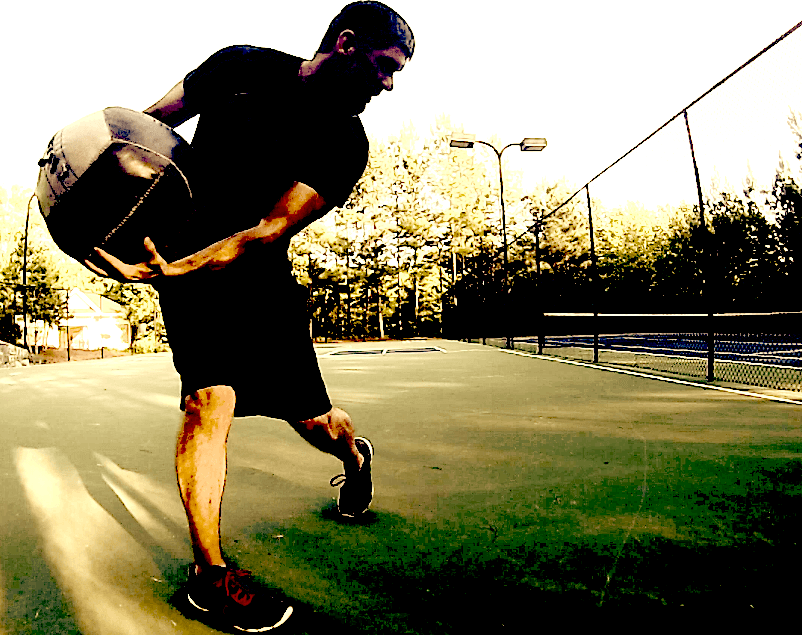
Finally, rolling. You could use it in every phase. Still, going for it in the final one is the best way to get highly-specific BJJ endurance done. All kinds of drills, from short rounds with fresh partner rotations to positional rolls, task rolls, man in the hole drills, and anything else you can think of fit here. Just make sure you’re really pushing yourself as much as all those underlying factors allow. The caveat here is that you’re’ also fine-tuning your technique, tactics, and feel of Jiu-Jitsu in the process.
Conclusion
Training for BJJ endurance is not easy to figure out initially. Once you’ve got all the pieces of the puzzle solved, though, you’ll be able to be extremely effective when it comes to muscular endurance for grappling. Whether it is a tournament you’re preparing for, or just rolling in general, endurance is the one athletic quality you’ll need more than anything else. So, before you think about strength, flexibility, and all the other stuff, learn your techniques. Also, figure out how o train endurance for BJJ in a way that makes sense to you.


![Darce Choke Encyclopedia – Origins, Mechanics and Variations [2024] BJJ, choke, Brabo, BJJ Darce Choke, D'arce Choke, Darce BJJ Choke](https://bjj-world.com/wp-content/uploads/2017/11/JungPoirierLeeYahoo-218x150.jpg)






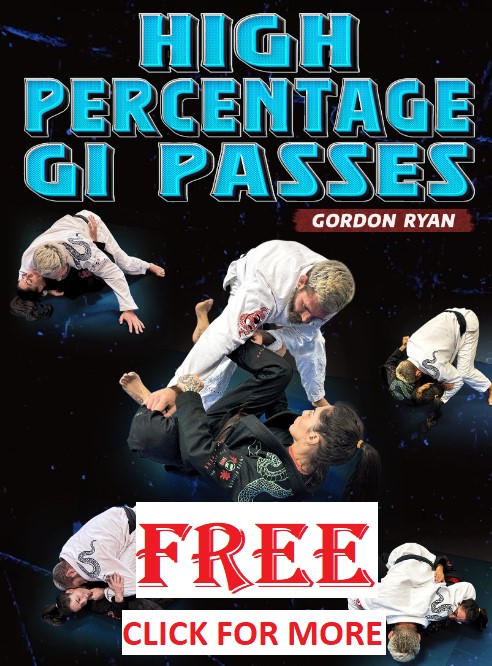


![Front Headlock and Turtle Escapes Brian Glick DVD Review [2024] Front Headlock and Turtle Escapes Brian Glick DVD Review](https://bjj-world.com/wp-content/uploads/2024/11/headlock-and-turtle-escapes-brian-glick-dvd-review-218x150.png)
![Basic Closed Guard Jasmine Rocha DVD Review [2024] Basic Closed Guard Jasmine Rocha DVD Review](https://bjj-world.com/wp-content/uploads/2024/11/basic-closed-guard-jasmine-rocha-dvd-review-218x150.png)
![Don’t Stand Up Chris Wojcik DVD Review [2024] Don't Stand Up Chris Wojcik DVD Review](https://bjj-world.com/wp-content/uploads/2024/11/dont-stand-up-chris-wojcik-dvd-review-218x150.png)
![EMU Guard 2.0 Benjamin Power DVD Review [2024] EMU Guard 2.0 Benjamin Power DVD Review](https://bjj-world.com/wp-content/uploads/2024/11/emu-guard-2-0-benjamin-power-dvd-review-218x150.png)
![The Whole Omoplata Enchilada Lyanne Perez DVD Review [2024] The Whole Omoplata Enchilada Lyanne Perez DVD Review](https://bjj-world.com/wp-content/uploads/2024/11/whole-omoplata-enchilada-lyanne-perez-dvd-review-218x150.png)
![No-Gi Defense Xande Ribeiro DVD Review [2024] No-Gi Defense Xande Ribeiro DVD Review](https://bjj-world.com/wp-content/uploads/2024/11/no-gi-defense-xande-ribeiro-dvd-review-218x150.png)
![Advanced Immortal Clinch Matt Brown DVD Review [2024] Advanced Immortal Clinch Matt Brown DVD Review](https://bjj-world.com/wp-content/uploads/2024/09/advanced-immortal-clinch-matt-brown-dvd-review-324x235.png)
![A Blueprint For Smeshing Khabib Nurmagomedov DVD Review [2024] A Blueprint For Smeshing Khabib Nurmagomedov DVD Review](https://bjj-world.com/wp-content/uploads/2024/10/blueprint-for-smeshing-khabib-nurmagomedov-dvd-review-100x70.png)








![Just Pass Jay Rodriguez DVD Review [2024] Just Pass Jay Rodriguez DVD Review](https://bjj-world.com/wp-content/uploads/2024/11/just-pass-jay-rodriguez-dvd-review-100x70.png)


![Miko Hytonen Lapel Chokes From Everywhere DVD Review [2024] Miko Hytonen Lapel Chokes From Everywhere DVD Review](https://bjj-world.com/wp-content/uploads/2024/10/miko-hytonen-lapel-chokes-from-everywhere-dvd-review-100x70.png)



![Front Headlock and Turtle Escapes Brian Glick DVD Review [2024] Front Headlock and Turtle Escapes Brian Glick DVD Review](https://bjj-world.com/wp-content/uploads/2024/11/headlock-and-turtle-escapes-brian-glick-dvd-review-100x70.png)
![Kill The Underhook Dima Murovanni DVD Review [2024] Kill The Underhook Dima Murovanni DVD Review](https://bjj-world.com/wp-content/uploads/2024/10/kill-the-underhook-dima-murovanni-dvd-review-100x70.png)
![Reverse De La Riva System Mikey Musumeci DVD Review [2024] Reverse De La Riva System Mikey Musumeci DVD Review](https://bjj-world.com/wp-content/uploads/2024/11/reverse-de-la-riva-system-mikey-musumeci-dvd-review-100x70.png)
![Don’t Stand Up Chris Wojcik DVD Review [2024] Don't Stand Up Chris Wojcik DVD Review](https://bjj-world.com/wp-content/uploads/2024/11/dont-stand-up-chris-wojcik-dvd-review-100x70.png)
![Complete Front Headlock System Michael Pixley DVD Review [2024] Complete Front Headlock System Michael Pixley DVD Review](https://bjj-world.com/wp-content/uploads/2024/10/front-headlock-system-michael-pixley-dvd-review-100x70.png)
![Giancarlo Bodoni DVD Bundle Essential Connections Full Review [2024] Giancarlo Bodoni DVD Bundle Essential Connections Full Review](https://bjj-world.com/wp-content/uploads/2024/09/giancarlo-bodoni-dvd-bundle-essential-connections-100x70.png)

![Jeff Glover DVD Bundle Review: Chokin’ Around With Uncle Jeff [2024] Jeff Glover DVD Bundle Review: Chokin' Around With Uncle Jeff](https://bjj-world.com/wp-content/uploads/2024/10/jeff-glover-dvd-bundle-review-chokin-around-100x70.png)



![Jett Thompson Master Ankle and Aoki Lock DVD Review [2024] Jett Thompson Master Ankle and Aoki Lock DVD Review](https://bjj-world.com/wp-content/uploads/2024/09/jett-thompson-master-ankle-and-aoki-lock-dvd-review-100x70.png)